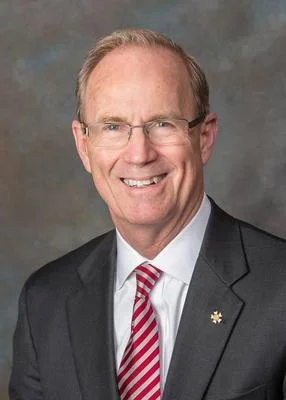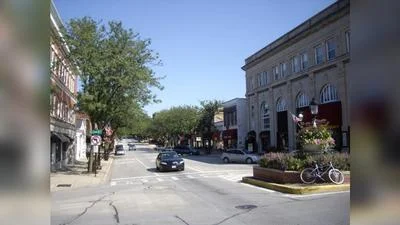A sharp crime surge is hitting Chicago and the city’s Hispanic-majority police districts so far in 2023. No wonder a new poll shows a far higher percent of Hispanic voters see crime as a deciding issue in the April mayoral run-off compared to other demographics. The contest is between white law-and-order candidate Paul Vallas and black progressive Brandon Johnson. Hispanics could decide the race, but only if their historically weak voter turnout improves.
In Chicago’s five Hispanic-majority police districts, major crimes are up 43 percent so far in 2023 versus the same 12 weeks of 2022. Those districts – 8, 9, 10, 17, and 25 – cover parts of the Northwest, West, and Southwest Sides. The numbers reflect combined murders, criminal sexual assaults, robberies, aggravated batteries, thefts, and motor vehicle thefts.
In those same districts, crime was already up 22 percent comparing full-year 2022 versus pre-George Floyd 2019.
The city’s crime surge including Hispanic communities could bode well for Vallas. Very likely voters who are Hispanic favored him for mayor 57 percent to 30 percent over Johnson in the run-off contest April 4, according to drill-down details in the March 23-25 Emerson College/WGN-TV poll. Among all very likely voters Vallas was up by 46-41.
On a separate question about crime-fighting capabilities of the two finalists, 63 percent of Hispanics said they trust Vallas’ detailed and technocratic crime-fighting agenda versus 28 percent choosing Johnson’s social spending and “social justice” crime-busting approach. That’s compared to 52-38 sentiment among black voters favoring Johnson on crime versus 66-29 Vallas among whites and 51-45 Vallas for Asians.
Chicago Hispanic voters see crime as a deciding issue for mayor
To be clear, crime is sharply on the rise citywide, not just in Hispanic-majority police districts. Major crimes in Chicago so far this year are up 45 percent versus last year. That’s on top of a 33 percent increase in citywide crime between year-end 2019 and year-end 2022.
Hispanic communities aren’t catching much of a break from crime in recent years – and they’re distinct now because – far more than blacks, whites, or Asians – they see crime as a key issue in deciding how to vote for mayor.
The Emerson College/WGN-TV poll’s crosstabs show 67 percent of very likely Hispanic voters say crime is the most vital concern in choosing a new mayor versus 52 percent for all very likely voters, 55 percent of whites, 43 percent of blacks and just 21 percent of Asians. (Asians more than other groups especially identify as the top factor either education, taxes, homelessness, or race relations, thus driving down the percentage who prioritize crime as a Number One concern).
Hispanic officials are finding their public voice on the crime issue. Although mayoral primary progressive candidate and U.S. Rep. Jesus “Chuy” Garcia endorsed Johnson, the Hispanic Leadership Council, which Garcia co-founded, endorsed Vallas and cited crime as one factor.
A top official there named David Andalcio said, “We need someone who can hit the ground running. Our city is in crisis. We need a steady and proven hand. We need a workhorse and not a show horse…Hispanic voters are centrists who share Paul Vallas’ immigrant values. We want safe streets, world-class schools and a thriving business opportunity.”
Some 81 percent of Hispanic voters surveyed in the Emerson College/WGN-TV poll thought Chicago was headed in the wrong direction, considerably more than any other racial group.
Hispanics could decide who becomes Chicago’s next mayor, so getting them to cast ballots will be key. Voter turnout in the Feb. 28 primary was lower than the citywide average in 8 of the 14 Hispanic-majority wards; and equal or better in just 6.
As it goes for the tamaleros of 26th Street, so goes Chicago
Actions matter more than words in regaining public safety in Chicago. But words still matter. They can set a tone of firmness and accountability. Or they sink a candidate’s ship.
Vanquished one-term incumbent Chicago Mayor Lori Lightfoot showed repeated tone-deafness on the city’s crime crisis. She called crime critics “haters,” when the real haters are the perpetrators of murder, shootings, armed robberies, rapes, and carjackings. She also said she was putting more cops on the street, when she wasn’t. And she told Hispanic tamale and elote street vendors on 26th Street in Little Village that if they wanted to be safe from repeated armed robberies, they should really go cashless.
Here’s one good measure of Chicago’s next mayor, on crime: whether 26th Street is made safe for tamaleros again. Street food sales are hardly the full measure of the vibrant and growing economy being built by Hispanics in Chicago. But famed urbanist Jane Jacobs made an urgent point in her classic 1961 book “The Death and Life of Great American Cities.” You need to have what she called “eyes on the street.” Pedestrians going to and fro, and shopping at street-level businesses, keep an eye on things and quietly contribute to safe communities.
That’s partly because the comfort and presence of pedestrians and local shoppers helps to deter – as would reinstatement of police foot patrols – the type of predatory crime that has now sadly become endemic in Chicago. If crime continues running rampant there will be fewer and fewer eyes on the streets of Chicago. Which will only encourage more preying upon those who do risk going out. Think of it all this way: If the tamale vendors of 26th Street can’t be safe, then neither can Chicago.





 Alerts Sign-up
Alerts Sign-up